Citrus aurantifolia
Images obtained while working with Morthy Solomon, December 1999.
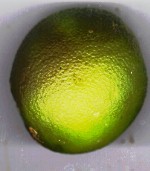

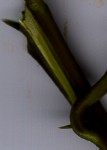
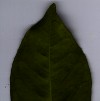

Images obtained while working with Shinmaysin Gonzaga, Fall 2000.
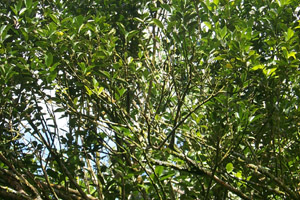
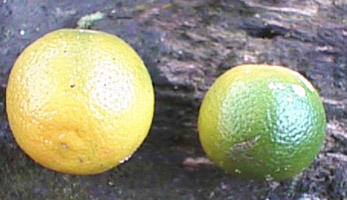
Location Collected: Mwalok
Date Collected: 12/01/99
Collected By: Morthy Solomon. Text by Loveleen James, Fall 2000.
Kosrae
A full lime is squeezed into hot water to create a very strong and tart tea that treats coughing associated with a cold.
Pohnpei
Serlinda Soukon: Karer is medicinal from top to bottom. The young leaves are used for coughing. You have to boil the leaves and drink the boiling water. Karer can also be used for headache. You can take the young leaves, pound them and put them in oil. When you have a headaches, apply to skin. The green leaves are used for umwulap (steam bath) when you have a cold or flu. You can also mix the leaves with other leaves and boil the mixture, drink to help the blood vessels, the muscles, and other bodily organs. The juice of the fruit, drunk undiluted, is good for coughing. Any cut not caused by a knife can be treated with undiluted juice. This will hurt, but the wound will heal more rapidly. The skin of the tree (kelupwur) can be cut into pieces, put into a cloth, placed in boiling water, squeezed into a cup, and drank. This will cure soumwahu en lusulus. Soumwahu en lusulus is characterized by high fever and convulsions. Locals tend to refer to this as "jumping" sickness. February 2004.
- Genus: Citrus aurantifolia
- Family:Rutaceae
- English name: lime
- Chuukese name: laimis
- Kosraen name:lime
- Pohnpei name: karer in lopwolopw
- Yapese name:Ramong
- Growth form: shrub
- Growth location: terrestrial
- Growth environment: cultivated area
- Growth Zone: tropical
- Average Height: 7-12ft
- Stem: Woody
- Leaf Arrangement: Opposite
- Stipule:none
- Petiole:1/2 inch
- Leaf Blade: Ovate
- Inflorescence: Raceme to cyme
- Floral Bracts: None observed
- Flower: white, small, has fragrance, unisexual,
- Calyx: The color is white,five parts, fused at the beginning but blooms into five parts
- Corolla: Campanulate
- Stamens: The filaments and anthers surround the stigma
- Ovary: Superior
- Style: Green leaves,
- Fruit: Circular
- Seed: located inside fruit, small and oval with one pointed end
- Anything else: Flower and leaf are fragranted; Very thorny bush.
- Cultural Usage: Used as a sauce in variety of dishes, juice of fruit is used as a
detergent.
Description by Natalia Peter, Fall 2000:
- Citrus Aurantifolia
- Family: Rutaceae
- Chuukese name: nimis
- English name: lime
- Kosraen name: lime
- Pohnpeian name: karer
- Yapese name: nemong
- Growth form: tree
- Growth location: terrestrial
- Growth environment: cultivated garden
- Growth zone: Tropical
- Average height: Rarely taller than 12 ft. (2-4m high)
- Stem--spreading and woody, brown in color
- Leaf arrangement: alternate
- Stipule---absent
- Petioles--1-2 cm., smooth surface, narrowedly winged
- Leaf blade--acute, entire, elliptic,oblong-ovate, rounded at the base(2-3inch.) dark
green above, paler green below
- Inflorescence--none
- Floral bracts--none
- Flower-- Faintly fragrant or scentless, auxillary, 5cm. across are solitary or 2-7 in. a
raceme, have 4 to 6 oblong, spreading petals,white but purple when fresh.
- Calyx--none
- Corolla--3-4
- Stamens--20-25 bundled white stamens with yellow anthers.
- Ovary--inferior
- Style--1/4 inch
- Fruit--borne singly or in 2's( or sometimes large clusters at the twig tips) round,
obovate, or slightly elliptical, sometimes with a slight nipple at the apex, the base
rounded and faintly necked, 2cm., somewhat rough to very smooth.
- Seed--3-5, obovate, smooth
- Anything else--It thrives in a warm, moist climate
- Cultural usage: the lime, because of its special bouget and unique flavor, is ideal for
serving in half as a garnish and flavoring for fish and meats, for adding zest to cold
drinks and for making lemonade.
Ethnoherb •
Ethnobotany •
Herbarium •
Botany •
Work •
COMFSM











